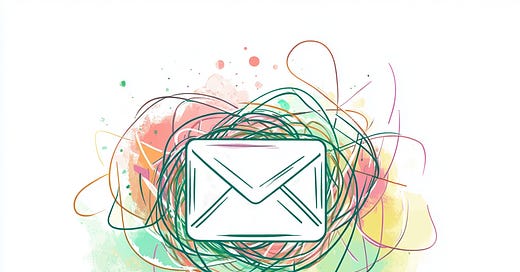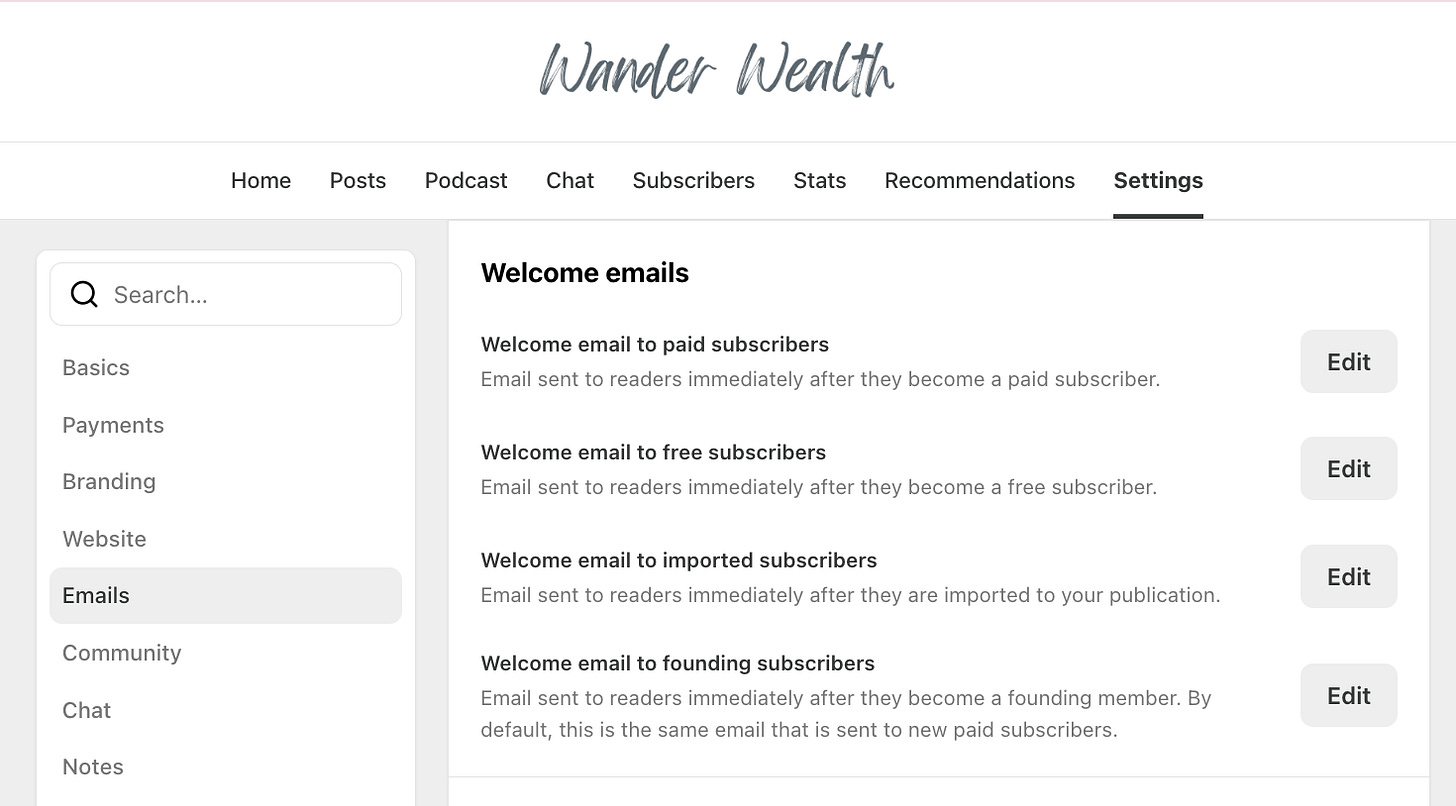Substack Welcome Emails Made Easy
Create lasting first impressions with personalized welcome messages
Let me help you to leave a good first impression
I recently signed up for some new newsletters, where I enjoy interacting with the authors. Since they’re all fairly new to Substack, it’s understandable that they haven’t figured everything out yet.
However, they’re not so new that they shouldn’t care about making a good first impression.
So today, let me run you through Substack’s confusing welcome e-mail set-up system and help you untangle it.
Here’s what we’ll cover:
How to set up Substack welcome emails
How to create different email sequences
Key points to include in each email
Voilà. Let’s go.
‼️ My prices are going up in 6 days. If you’ve considered becoming a paid subscriber, now’s the time. And did you know: once you’re in, your price stays locked, even when it goes up for others. So grab this deal while you can.
It will never be as cheap again. 🚀
You’ll get:
Full access to my Grow Your Substack Course: This course has tutorial videos, workshops, and everything you need to grow your Substack. Normally, this is valued at $437, but it’s all yours as part of your subscription.
Exclusive community access for writers: Join a private space where we can connect, share ideas, and support each other. It’s usually $37/month, but you’re in for free.
That’s a total value of $474, all for just $7/month or even better—$60/year 🤯.
Welcome E-Mails Step-by-step
The first part is to find out, where to set up your welcome e-mails. Let me get something out right away: Substack is made to be worked on on the computer. The app works there so much better. The mobile version is nice, but to be honest is rather for the notes feed and reading than really setting things up on your end. So this tutorial will be for people who work on their computers.
Where to set them up
If you are on the Substack homepage, and you have your publication set up (on Substack that’s your way to send our newsletters and e-mails and be able to have it all in one nice packaged format), you can find the Dashboard button in the upper right corner. Click that and it will bring you to the dashboard of your publication. From there, navigate to Settings, and in the lefthand menu, scroll down to Emails.
Today, we will only care about the 4 different welcome e-mails.
The different welcome e-mails
As you can see there are 4 different e-mails for
paid subscribers
free subscribers
imported subscribers
founding subscribers.
Paid subscribers are those who pay you monthly or yearly (in advance) to read your newsletter and get access to the perks you have defined for them in the Payments setting. This is the kind of group you want to be especially thankful for as they believe in you and what you offer so much that they are willing to pay for it. This is what my welcome e-mail to paid subscribers looks like.
What I include
A nice title hinting that they have unlocked something
The value that they are getting
Resources that they are getting
Ask them to get back to me if they are interested in the resources. Spoiler: 100% are, after all, they purchased access to them. But my asking to respond creates a tighter connection with them right away. Typically we then exchange via e-mail or via chat. I love doing this as it really creates a different vibe right away.
Free subscribers are the ones who can get your posts for free and interact as much as you set it up. It’s up to you what they can read
You can also create posts for paid members only
Pay-wall them so free subscribers can only see part of them).
Let only paid subscribers comment on your posts and notes
Only paid subscribers interact in your chat.
Or you let the free ones in for all of that as well.
My benchmark number is to create an audience of around 100-300 free subscribers before playing around with paid models.
My free welcome e-mail is longer than my paid one as I really want to explain the value of my newsletter. Here is what I include
What they will get out of my newsletter
Value if they become a paid member
Links to some useful articles (past posts that performed well)
Customized buttons that are different from the normal “Subscribe” (you can find them by clicking on the button menu, clicking the little arrow done, and choosing Custom).
Imported subscribers. This becomes relevant if you have an e-mail list that you want to bring over to Substack. For your new imported subscribers not to be confused you can set up an automatic e-mail that they will get from you.
I have only done that once with around 30 people and said something like this:
Thank you for signing up to receive my emails. I have something even better now—my free newsletter on Substack. It's like a normal email, but with a more personal touch.
And explained what my newsletter is about.
Finally, founding members. Those are people who really want to support you and dig deeper into the value of what your newsletter provides. In my experience, founding members are also those who want to get closer to you as a person.
My founding member welcome e-mail is similar to the e-mail for the paid subscribers, but I added the extra perks that they unlocked to work with me individually (individual coaching calls).
To be honest, I have the best relationships with my founding members because they are also the ones most committed to making it work.
This is all. I hope it helped you untangle the different Substack welcome e-mails.
Tip: If you are brand-new, just work on the e-mail for FREE subscribers, that’s the only important one in the beginning.
Can you believe there are 1914 of us here now? 🤯
If you are thinking about monetizing your efforts like the other 1914 achievers, then join our Wander Wealth Community
If a subscription is not possible, please comment, like, share. It really helps.
Have you joined the chat yet? We’re supporting each other every step of the way.










This helps a lot Claudia!! I’ve redesigned my welcome mail with a thank you card and personalised message of what stories you’ll receive starting from now! Just experimenting with things!
Also, a doubt, I added a few emails via the import, and they said they haven’t received my welcome mail yet! A few told they have this issue, and idk why. Does it take to long to receive mail?
Such a resourceful article, especially for people like me who just never know how to compose newsletter emails or what to write.